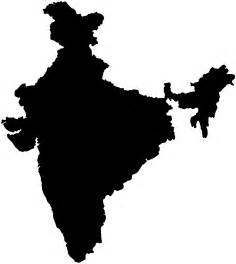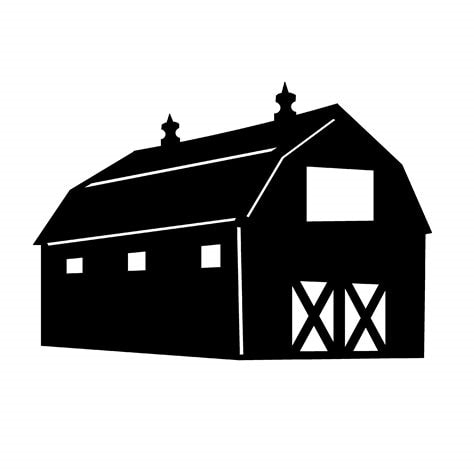History (Michaelmas Exam)
1/17
Earn XP
Description and Tags
Name | Mastery | Learn | Test | Matching | Spaced |
|---|
No study sessions yet.
18 Terms

How sugar reached the Islamic world (AD350-AD1100)
India
Sugar grows in hot countries and was native to India.
In AD350 people began: crushing the sugar cane, boiling the juice and drying it to make sugar crystals. Which, from there, could be added to sweeten food.

How sugar reached the Islamic world (AD350-AD1100)
Islam
After the Prophet Muhammad died in AD632, the religion of Islam grew rapidly.
By AD750 it had reached Spain in the West and India in the East.
Basically sugar spread throughout the Islamic world.

How sugar reached the Islamic world (AD350-AD1100)
Farming
Contact between The Islamic world and India meant sugar cane farming spread West quickly.
By the eleventh century it was grown in Africa and Spain.
Farmers developed new methods of irrigation and built watermills to grind the sugar.
How sugar spread to Europe and the Caribbean (AD1100-AD1500)
Sugar for the rich
Between 1100-1400 sugar was an expensive luxury in Europe.
It was not used in cooking but sometimes made into sculptures to show of wealth.
How sugar spread to Europe and the Caribbean (AD1100-AD1500)
Sugar heads south
At the end of the fifteenth century Portuguese and Spanish sailors explored islands off the coast of Africa.
They started sugar plantations on Madeira, the Canary Islands, Cape Verde and Sao Tome.
The work was done by European settlers, but on Sao Tome the Portuguese took people from nearby African kingdoms and made them work as slaves.
How sugar spread to Europe and the Caribbean (AD1100-AD1500)
Sugar goes west
At the end of the fifteenth century Europeans began to build bigger and better ships.
In 1492 Christopher Columbus ‘discovered’ the Caribbean islands and named them ‘The West Indies’.
In 1493 Columbus took sugar cane to the Caribbean and planted it, the Portuguese also took sugar across the Atlantic and began to grow it in settlements on the coast of Brazil.
Indigenous people were forced to work producing sugar and this led to the destruction of some tribes.
Transatlantic sugar (1500-1800)
Inward passage
Ships returned to Britain with the products from the slave plantations including sugar, tobacco and rum.
Transatlantic sugar (1500-1800)
Outward passage
Manufactured goods such as linen, guns and alcohol were transported from Britain to Africa.
Transatlantic sugar (1500-1800)
Middle passage
Enslaved African people were transported in awful conditions on the 4-6 week journey to the Caribbean Islands.
Effects of Triangular trade
Investors get rich
The growth in the Caribbean sugar trade created great wealth.
Investment in the slave trade was widespread among the upper and middle classes who profited from the slave trade.
Plantation owners made vast fortunes from increased sale of sugar and used this to build grand houses.
Effects of Triangular trade
Sugar was available to the middle class
It was used in tea, coffee and chocolate. These products were brought to Britain in 1650.
Recipe books encouraged people to produce puddings, cakes and tarts sweetened with sugar.
Sugar was fashionable and sugar loaves were displayed on tables to show wealth.
The human impact of sugar
Slaves being captured in Africa
Historians have estimated that as many as 12 million people were taken from African continent by European slave traders.
Slaves were sometimes prisoners of war but often were just individuals captured by slave traders from their villages.
Slaves were often forced to walk hundreds of miles to the coast where they would then be traded for manufactured goods.
The human impact of sugar
Conditions on the Slave ships
Conditions on the slave ships are hard to imagine - sometimes as many as 600 enslaved African people would be packed onto one ship.
The slaves were chained together and packed into dark, airless holds below deck. Men, women and children were separated and had little or no access to sanitation and very little food or water. •
Slaves were regularly whipped or punished to keep them subdued, however there were instances of African captives fighting back against their captors.
Between 1680-1688 23 out of every 100 Africans died in transit.
The human impact of sugar
Slave auctions
On arrival in the West Indies the slaves were cleaned, and scars from beatings were covered using hot tar.
The slaves would then be sold at auction to the highest bidder, the healthiest slaves would fetch the highest prices •
Slaves that were weak or did not sell were put in a ‘scramble auction’ where the bidders would all pay a fixed price and would then just grab whichever slaves they wanted.
Who benefited from the slave trade?
British Slave Traders - who bought and sold enslaved Africans.
Plantation Owners - who used slave labour to grow their crops. Vast profits could be made by using unpaid workers. Planters often retired to Britain with the profits they made and had grand country houses built for them. Some planters used the money they had made to become MPs. Others invested their profits in new factories and inventions, helping to finance the Industrial Revolution.
West African leaders involved in the trade - who captured people and sold them as slaves to Europeans.
The ports - Bristol and Liverpool became major ports through fitting out slave ships and handling the cargoes they brought back. Between 1700 and 1800, Liverpool's population rose from 5000 to 78,000.
Ordinary people - the Transatlantic Slave Trade provided many jobs for people back in Britain. Many people worked in factories which sold their goods to West Africa. These goods would then be traded for enslaved Africans. Birmingham had over 4000 gun-makers, with 100,000 guns a year going to slave-traders.
Others worked in factories that had been set up with money made from the Slave Trade. Many trades-people bought a share in a slave ship. Slave labour also made goods, such as sugar, more affordable for people living in Britain
The anti-slavery campaign
Women
The started from the very beginning.
In the 1790s women were not allowed to sign anti-slavery petitions.
However, a large number contributed to local abolition committees and took part in some anti-slavery debates.
This was a time where very few women speakers spoke but when they were able to it made a real impact on the audience.
In 1820s women started to play an increasingly important role in the anti-slavery movement. Female anti-slavery societies began to flourish.
Women wanted total freedom of slaves as soon as possible but men wanted a gradual end to this so it would be more acceptable for the plantation owners.
They also played a crucial role in the sugar boycott.
Women also went from house to house trying to persuade people because at that time that was all they could do. They wore anti-slavery clothes and also made leaflets and letters to make people aware of what was happening.
The anti-slavery campaign
White campaigners
In 1878, 12 men started this group, 9 of the 12 were Quakers (a religious group, which had long opposed slavery). The other two were Granville Sharp and Thomas Clarkson who belonged to the church of England.
Granville Sharp made the first real step. He had won very important court cases which prevented slaves, who had escaped, return to slavery.
Thomas Clarkson was the principal / organiser behind the anti-slavery campaign. He led the campaign and persuaded MPs to vote to abolish the slave trade.
However, the man who came forward was William Wilberforce, who himself was MP for Hull. All these men were deeply religious and thought that slavery was morally wrong. The had to get people to support their campaign and put pressure on the government.
They set up a network of anti-slavery societies to get public support.
The anti-slavery campaign
Black activists
The black community in London in the 1780s consisted of at least 5,000 black men and women, with about twice that number in Britain as a whole. Many had come from war with America. Some were slaves who escaped or bought their freedom.
Even though they consisted of very little people they were a very powerful force in the anti-slavery movement. They wrote letters to the MPs and newspapers opposing slavery.
Olaudah Equiano and Quobna Ottobah were particularly important. They were both ex-slaves who wrote influential books that were read widely throughout Britain.
The slaves in the West Indies knew a surprising amount about what was going on in Britain. News reached them very quickly. They wanted to help out so they made life very difficult for the plantation owners and British governors.